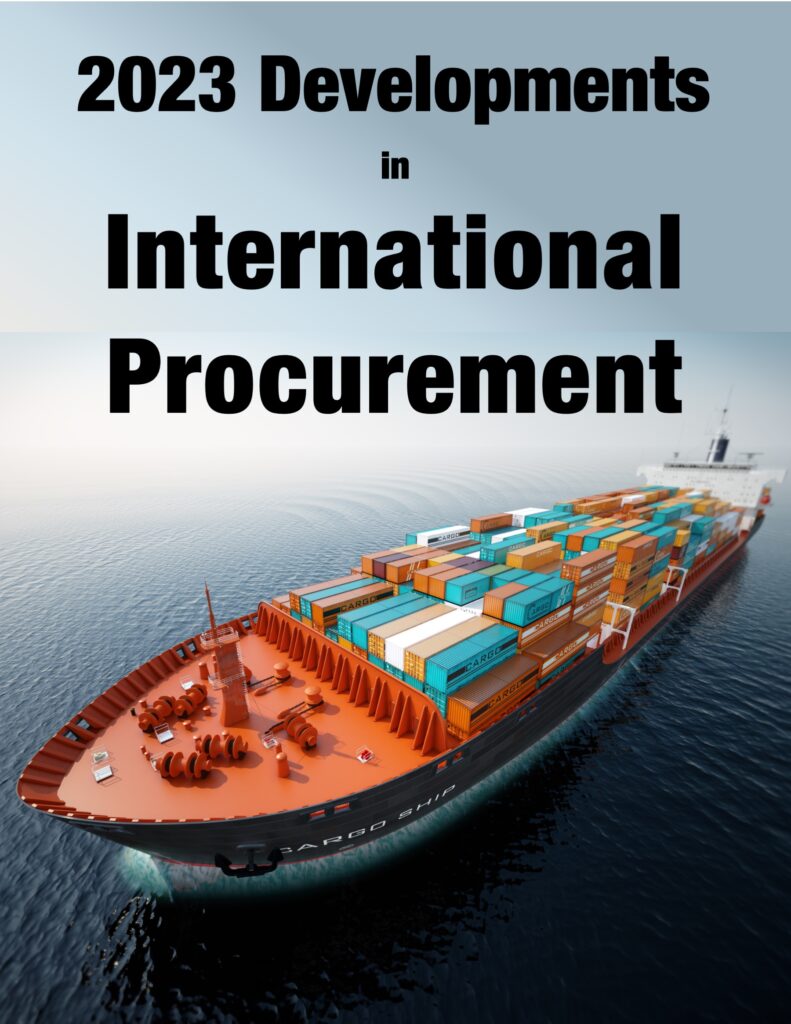
In 2023, the liberalization of procurement markets generally outpaced domestic protectionism with some worrisome signs.
Evidence of liberalization was seen in the WTO Government Procurement Agreement (GPA), which added its first new member in four years and welcomed its first accession application from Central America. Yet, this progress was undermined by other actions. For instance, Brazil—a major hope for expansion of the agreement—withdrew its market access offer and indicated it may not reengage without further concessions. The negotiations with China, the most significant candidate, marked their 16th year with no end in sight.
The European Uion (EU) made some progress on its FTA negotiating agenda, signing two FTAs that it had concluded in 2022. However, it ended the year with several unfinished negotiations, most notably with Australia and Mercosur. It faces pressures to conclude the outstanding negotiations before the European Parliament elections in June 2024.
The Comprehensive and Progressive Trans-Pacific Partnership (CPTPP) added the United Kingdom (UK) as its 12th member and began considering how to handle the applications of other would-be members, especially China and Chinese Taipei (Taiwan).
The United Arab Emirates’ (UAE) ambitious pursuit of bilateral trade agreements is a bright spot on the bilateral map. Over the past two years, it launched negotiations and concluded bilateral agreements with four countries, implementing three in 2023, following one in 2022. Of particular significance is that neither the UAE nor three of its partners are GPA parties. These agreements include a wide range of procurement provisions, with two providing market access commitments and one providing robust procurement procedures, though no new market opening. The fourth one only recognizes the significance of cooperation on procurement with the possibility of future procurement negotiations. The UAE also completed talks on an agreement with South Korea. In addition, the Gulf Cooperation Council (GCC) concluded FTAs with South Korea and Pakistan.
The UK continued its negotiations of trade and investment cooperation arrangements with United States (US) states. The US also concluded an agreement with 13 countries in the Indo-Pacific region with procurement provisions limited to anti-corruption but no market access commitments.
Against these expansions of international procurement were efforts to protect domestic procurement. The US continued implementation of its most far-reaching domestic preference for infrastructure projects receiving federal funds. Moreover, the US extended its domestic preferences outside of procurement, most prominently in the Inflation Reduction Act, and to federally funded research and development (R&D).
The EU leaned toward protectionism with two unilateral trade measures that provide for public procurement penalties if its interests are threatened.
Somewhat apart from the conflict between liberalization and protectionism are the issues related to the climate crisis. Countries are advancing the debate over how governmental purchasing power may be harnessed to reduce carbon emissions, and some countries have adopted climate-related measures. But they have yet to find a clear, common path forward. The US and EU have undertaken a green public procurement initiative. The US is also considering climate-related rules. Likewise, the G7 has agreed to lead by example, while the WTO Secretariat identified procurement as a tool for climate action.
On a final note, the WTO procurement committee has at last overcome one party’s blockage of the selection of a new chair.
The full report is available at: https://2023ProcurementDevelopments.dalstonpress.com
Jean Heilman Grier
January 10, 2024

